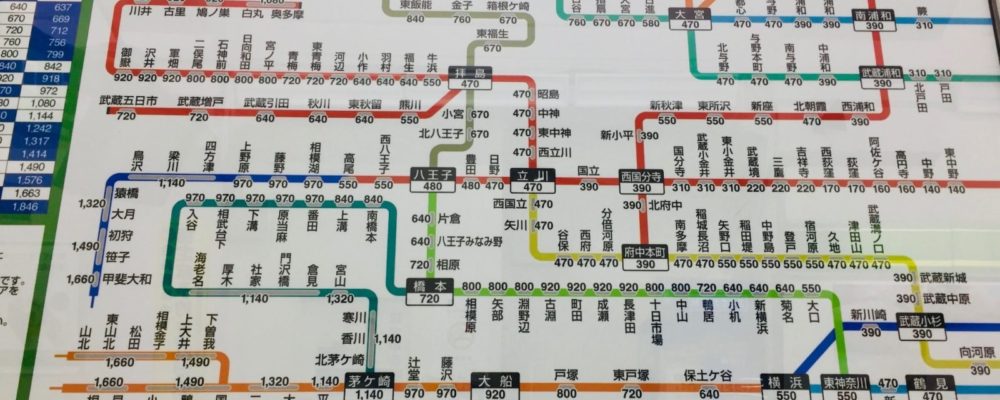Traveling in Japan is much easier than expected and you can get lost in the many cultural surprises you will discover along the way. Let us first start with some 10 easy travel tips for travel around Japan.
Many travelers are not planners and like to remain flexible. However, I recommend planning at least a few things and becoming familiar with Japan before you depart for your trip. This will make it easier and less expensive after you arrive.
Page Contents
Easy Ways Getting Around
Taxies are insanely expensive in Japan, so the train and subway are best ways to get around. The rail and subway systems are massive, and some of the stations do not have English translations of the train lines. I recommend either stopping at the JR East Travel Service center in the Narita Airport before heading into the city. You can also order or print maps of the cities you plan to visit ahead of time, which you should definitely do for travel outside of Tokyo.
The rail and subways in Tokyo are like underground cities and are the busiest in the world. Over a million plus people transit some of Tokyo’s stations each day. These are no ordinary train stops, where your only options are to go left or right when exiting.
One of Japan’s largest station, Shinjuku Station, has 200 exits. It is important to have an idea of where you need to end up. Citymapper will give you step by step instructions on how to plan your trips, to include telling you what part of the train you should get on and which exit to take out of the train station to get to your final destination.
Trains arrive and depart exactly when they are scheduled too! If you are late even by 30 seconds, you risk missing your ride.

JR Rail Pass
If you are going to be in Japan for several days, I highly recommend purchasing a Japan Rail Pass. It is a multi-use, discounted ticket for travel on all JR national trains in Japan. The pass includes the Shinkansen bullet trains you take to get around the country. It is a much cheaper way to get around and will save you LOTS of money. Just to paint a clearer picture, a 7 day pass cost me the same amount as a one round trip ticket between Tokyo and Kyoto.
The pass is only available for foreigners and you must purchase it before arriving in Japan. There are options for 7, 14, 21 consecutive days of travel. It takes about 2-3 days for the pass to arrive at your mailing address. I recommend giving yourself some extra time to receive it.
You can validate your pass at the JR East Travel Service Center at Narita airport when you land as well as other areas round the country. The clock starts on the pass after you use it for the first time.
Subway/Metro
You cannot use the JR rail pass on the Subway in Japan, but it’s relatively inexpensive to ride. Tokyo offers a 24, 48, 72-hour metro tickets that are only sold to foreigners. Starting price is less than $8.
Google Maps/SIM cards
If you have an unlocked phone, you should buy a SIM card at the airport. Having the ability to easily use the internet and Google Maps during your trip will make life much easier (Prices start around $30).
You can order a SIM card before your trip, but I like to buy it in country to to ensure I get what I paid for. If buying a SIM card is not an option, I recommend downloading Google Maps to use offline or renting a pocket WIFI router. There are many places where you can purchase one.
Book a Tour
Navigating most new cities can be difficult not matter the country, but it can be even harder when part of the population does not speak your native language. While getting around Japan, I exclusively used the JR and Subway systems, but when I wanted to visit a site and learn more about the location, I booked tours through Viator.com, tokyotravelpal.com, and getyourguide.com
Be on time!
The Japanese are very punctual, more so than in any other country I have traveled to. No matter what you are doing, you need to be on time so you do not miss out. Trains arrive and depart exactly when they are scheduled. Also, tours will start exactly on time. I was five minutes late to one tour because I took the wrong exit out of a subway stop and had to walk a half of a mile to get to the right destination. The tour group left me and I had to spend the next hour catching up with them. Also, the Japanese just consider tardiness to be rude. So, do not be late!!
Where do I put my trash?
I was completely surprised that I could not find a single trash can in public. Okay, there are a few, but they are hard to find. The most stated reason for the lack of trash cans is because of the coordinated terrorist attack on 20 March 1995. A deadly sarin gas was released into subway trains in Tokyo.
No trash cans also means there are no paper towels to dry your hands in bathroom. Where to dispose of them? You should keep a small plastic bag with you for your trash and a few hand wipes without during your trip.
Speaking of toilets…
There are different types of toilets in Japan. The Japanese style toilet, which is low to the ground, modern toilets, and high tech toilets with heated seats. The trick is that you may stand in the bathroom stall scratching your head trying to figure out how to flush them. It is not always obvious and there were a few times I just walked away.
Best Time to Go
You can visit Japan anytime of the year, but when you chose to go all depends on why you are going and what you want to see. I have several bucket list items to check off in Japan and I have completed most of them, but timing is everything and I was unable to do them all in one visit.
March-May and September-November are the best times of year to visit because you can see the beautiful cherry blossoms bloom in the spring and the changing of the leaves in the fall. But, don’t forget about Japan’s ski slopes and beaches.
Sumo wrestling matches happen throughout the year in different parts of the country. But, tickets for big tournaments sell out fast and it takes planning to attend.
Where to Stay
You only need one to two days in most of Japan. It is easier to base in one or two cities and then use your JR pass rail pass to get around to other parts of the country. I chose Tokyo and Kyoto. There is some debate over whether it is better to base in Osaka or Kyoto. I think Kyoto is quieter and has the old world charm. That is why many people are drawn to Japan in the first place.
There are so many options to chose from when determining where you will stay in Japan from traditional Japanese hotels called Ryokan to modern hotels.
Personally I have grown quite partial to Airbnb, especially since I was in Japan for two weeks, which I booked for my stays in Tokyo and Kyoto. There are generally hundreds of options. In Tokyo, I recommend that you stay near one of the larger subway stations. This will help save time getting around the city.
